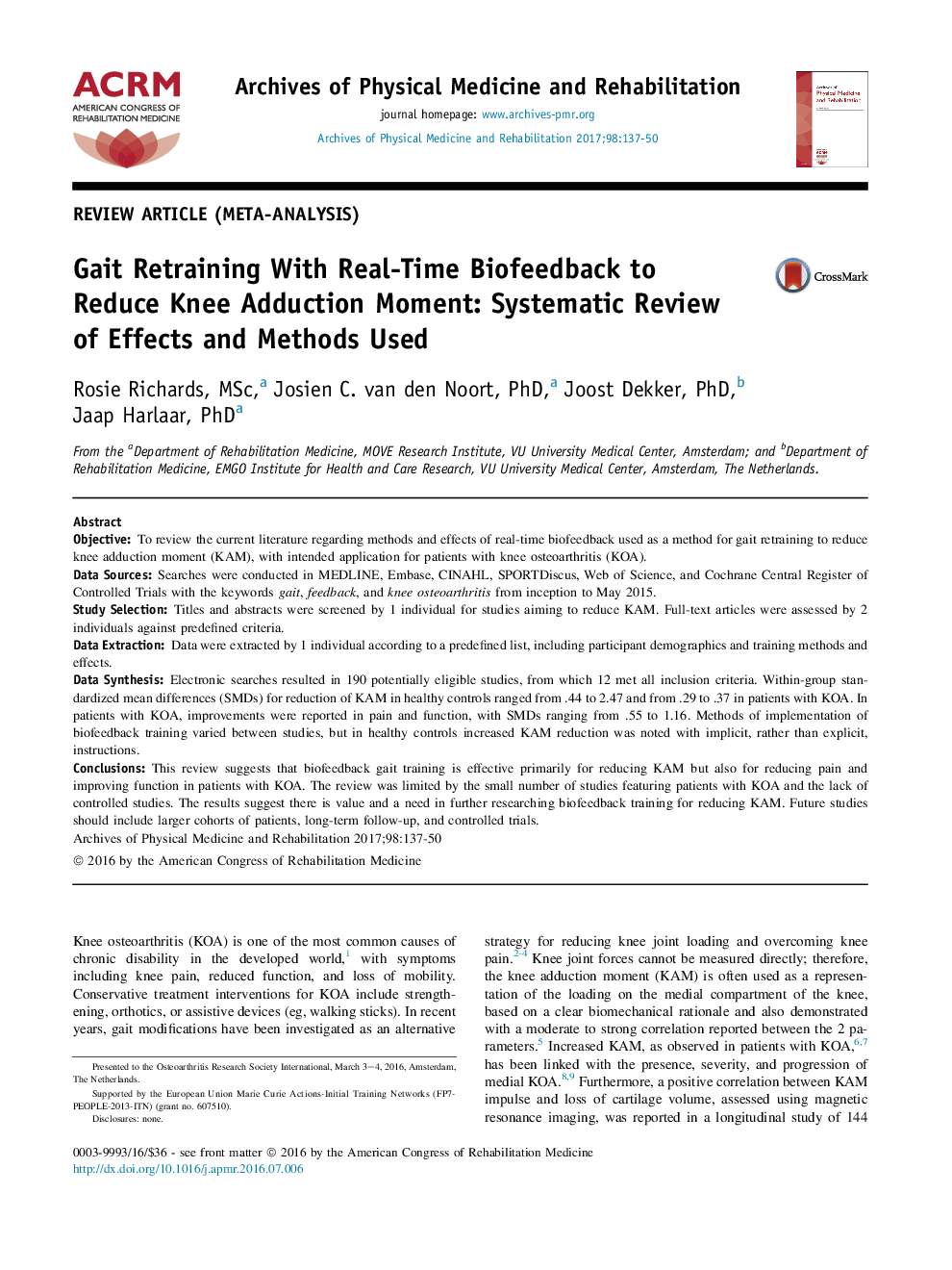| کد مقاله | کد نشریه | سال انتشار | مقاله انگلیسی | نسخه تمام متن |
|---|---|---|---|---|
| 5677591 | 1595658 | 2017 | 14 صفحه PDF | دانلود رایگان |
ObjectiveTo review the current literature regarding methods and effects of real-time biofeedback used as a method for gait retraining to reduce knee adduction moment (KAM), with intended application for patients with knee osteoarthritis (KOA).Data SourcesSearches were conducted in MEDLINE, Embase, CINAHL, SPORTDiscus, Web of Science, and Cochrane Central Register of Controlled Trials with the keywords gait, feedback, and knee osteoarthritis from inception to May 2015.Study SelectionTitles and abstracts were screened by 1 individual for studies aiming to reduce KAM. Full-text articles were assessed by 2 individuals against predefined criteria.Data ExtractionData were extracted by 1 individual according to a predefined list, including participant demographics and training methods and effects.Data SynthesisElectronic searches resulted in 190 potentially eligible studies, from which 12 met all inclusion criteria. Within-group standardized mean differences (SMDs) for reduction of KAM in healthy controls ranged from .44 to 2.47 and from .29 to .37 in patients with KOA. In patients with KOA, improvements were reported in pain and function, with SMDs ranging from .55 to 1.16. Methods of implementation of biofeedback training varied between studies, but in healthy controls increased KAM reduction was noted with implicit, rather than explicit, instructions.ConclusionsThis review suggests that biofeedback gait training is effective primarily for reducing KAM but also for reducing pain and improving function in patients with KOA. The review was limited by the small number of studies featuring patients with KOA and the lack of controlled studies. The results suggest there is value and a need in further researching biofeedback training for reducing KAM. Future studies should include larger cohorts of patients, long-term follow-up, and controlled trials.
Journal: Archives of Physical Medicine and Rehabilitation - Volume 98, Issue 1, January 2017, Pages 137-150
